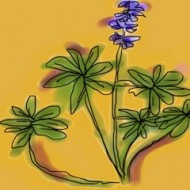The Dry Garden: New Year/Water Year
Saturday may mark the start of the 2011 calendar year, but the 2011 water year, the 12-month cycle used by hydrologists and water managers, began on Oct. 1.
Few Southern California water years have begun on such a dry note. Three months ago, a strengthening La Niña pattern in the Pacific suggested to climatologists that we were staring at a water year so potentially dry that it could make your voice rasp.
Then in December a weather system known as the Pineapple Express carried near-record rains through California. The upshot in Los Angeles County is that most places have already received half or more of the rain expected for the entire season. It’s reasonable to expect that when the 2011 water year ends Sept. 30, we will have reached or surpassed the regional average of about 16 inches, with numbers that are higher in the foothills and lower in …
2010: An ‘unusual’ year
Weather watchers have been waiting for climatologists, particularly Bill Patzert of the Jet Propulsion Laboratory, to eat crow. Since late summer, equatorial Pacific currents have led climatologists to believe that a record La Niña weather pattern will aggravate drought in the American Southwest. Patzert led the pack with warnings. Then rain across Southern California was early and steadily mounted, with December preliminary totals so heavy that Patzert is quoted in the Los Angeles Times tonight saying, “I think we’re going to crush the record for December.”
Whether one receives this as good news, or merely weird news, depends on how one takes a year that, as the Times report sketches, has bucked every notionally normal trend in Southern California. Traditionally hot summer months have been cool, a normally cooling autumnal stretch produced record heat, treacherous Santa Ana winds have been decorous and now what experts agreed would be a dry …
The Dry Garden: color me Western
It takes a hard heart not to swoon when the liquidambars that line so many streets in greater Los Angeles conduct their flaming descent into dormancy. As if entire city blocks drawn together in a season finale weren’t an eloquent enough elegy for a calendar year, the scarlet confetti of crape myrtle trees and the golden last gasp of ginkgos join the orchestra in a way that makes November and December the Southern Californian equivalent of fall back East.
There is, of course, a “but” coming, and it’s a big one. We’re not back East. Although the yearly curtain call of these exotic trees is undeniably glorious, they have a timing problem. It’s barely fall. Winter solstice is just four days away. How bothered you are by this lag depends on how you feel about leaf blowers working on Christmas Day.
Click here to keep reading The Dry Garden in …
The Dry Garden: Season’s gleanings
We can’t all be Virginia Paca, the gardener profiled on this blog in October who grows food and donates it to food banks. But this winter those of us with orange trees laden with fruit might take a page from the book of that Pasadenan. What more fitting holiday activity could there be than to glean our home orchards and donate fresh fruit to local pantries?
As winter closes in, that fruit very well may be oranges. It is pure serendipity that an activity that feeds people is also good for the orange trees.
Click here to keep reading The Dry Garden in the Los Angeles Times.…
The Dry Garden: Lawn killer’s tip sheet
Most of us know that the environmental toll of ornamental lawn in Southern California makes cigarettes look politically correct. Still, removing a long-tended home lawn takes a meeting of conviction and know-how. The steely inspiration will have to be yours. This column is intended only as a lawn killer’s tip sheet.
Click here to keep reading about graminicide in the Los Angeles Times.…
« go back — keep looking »

